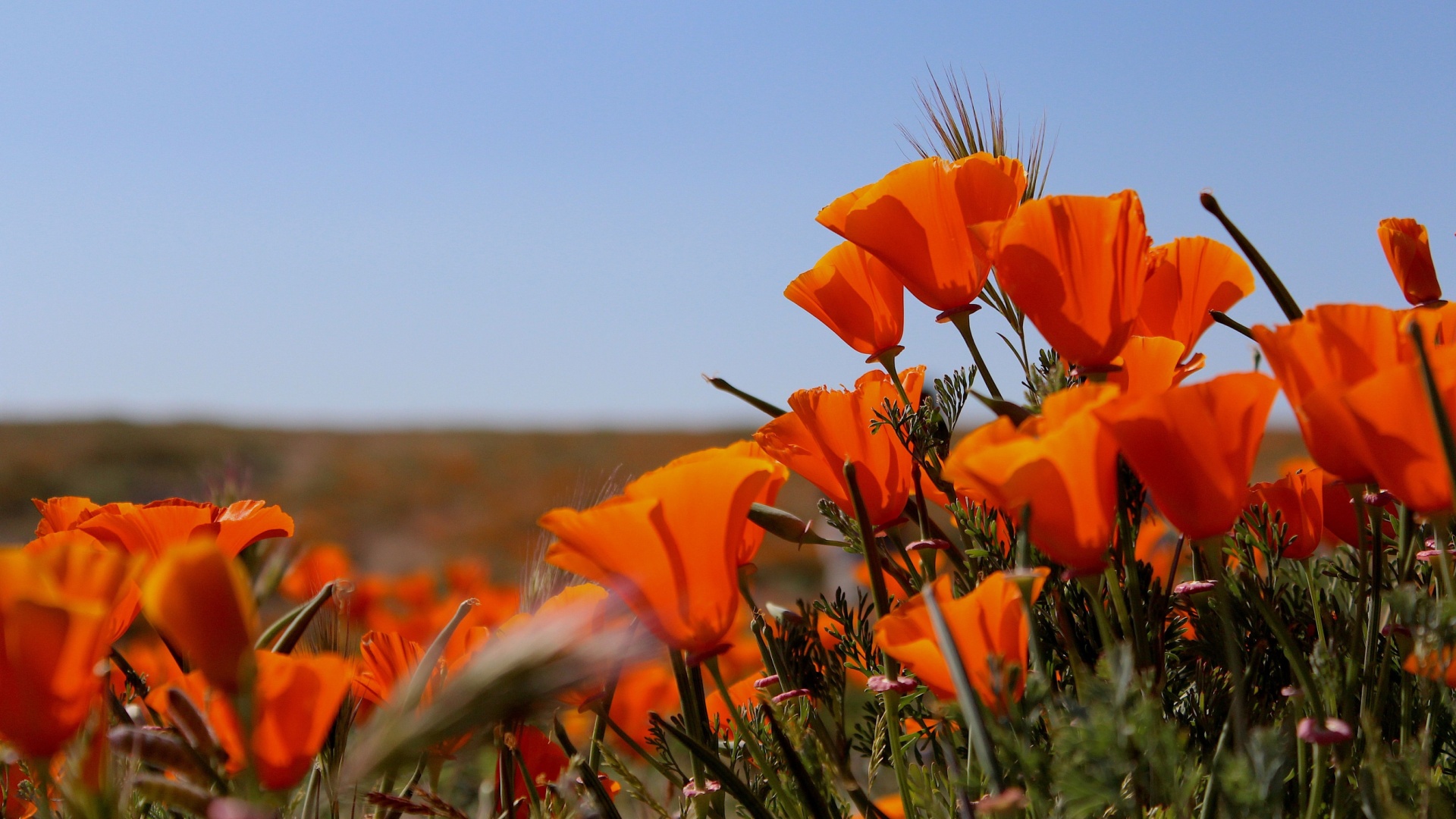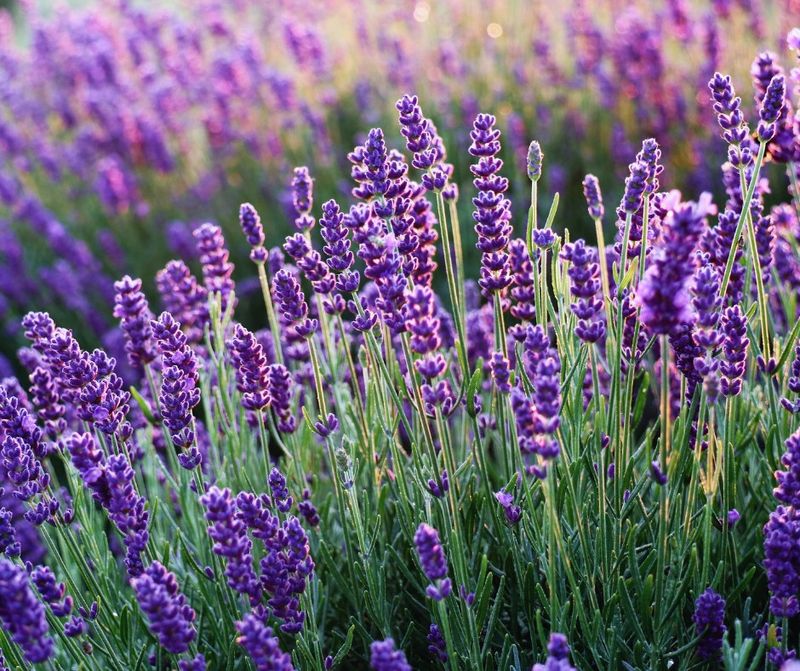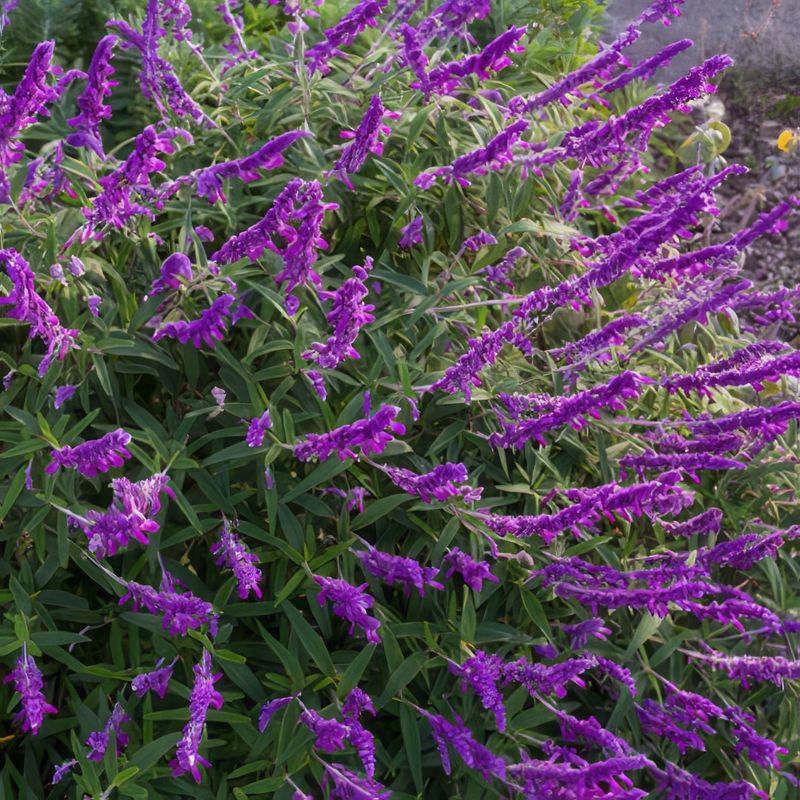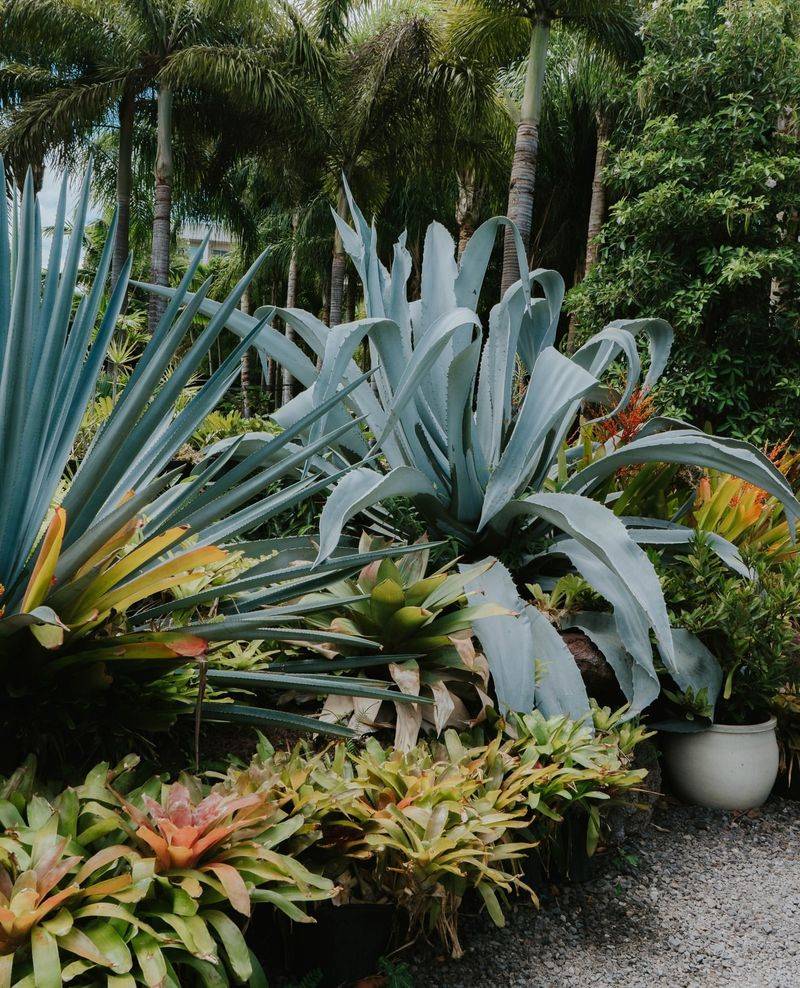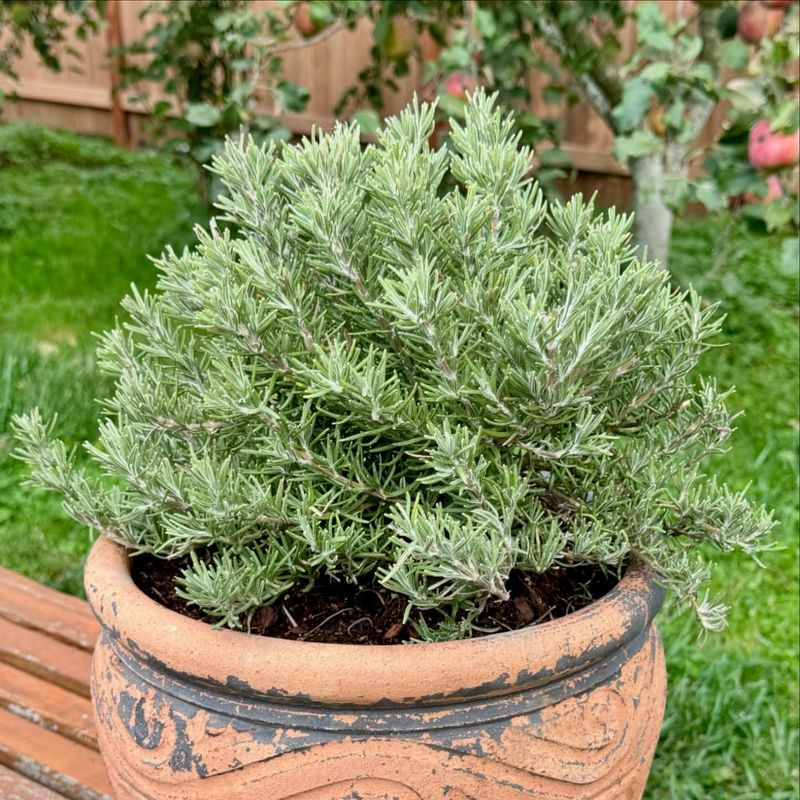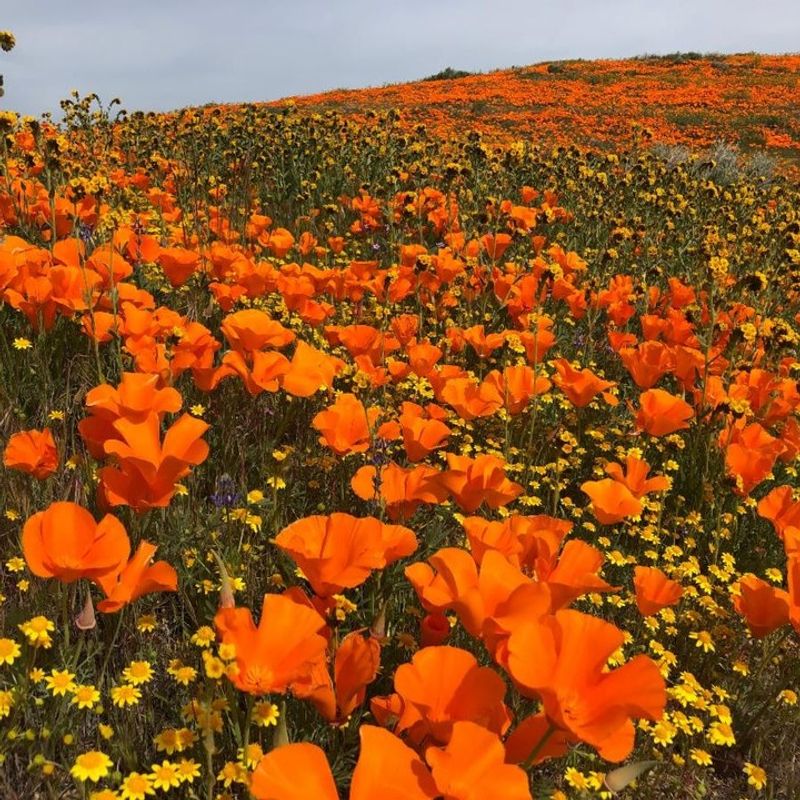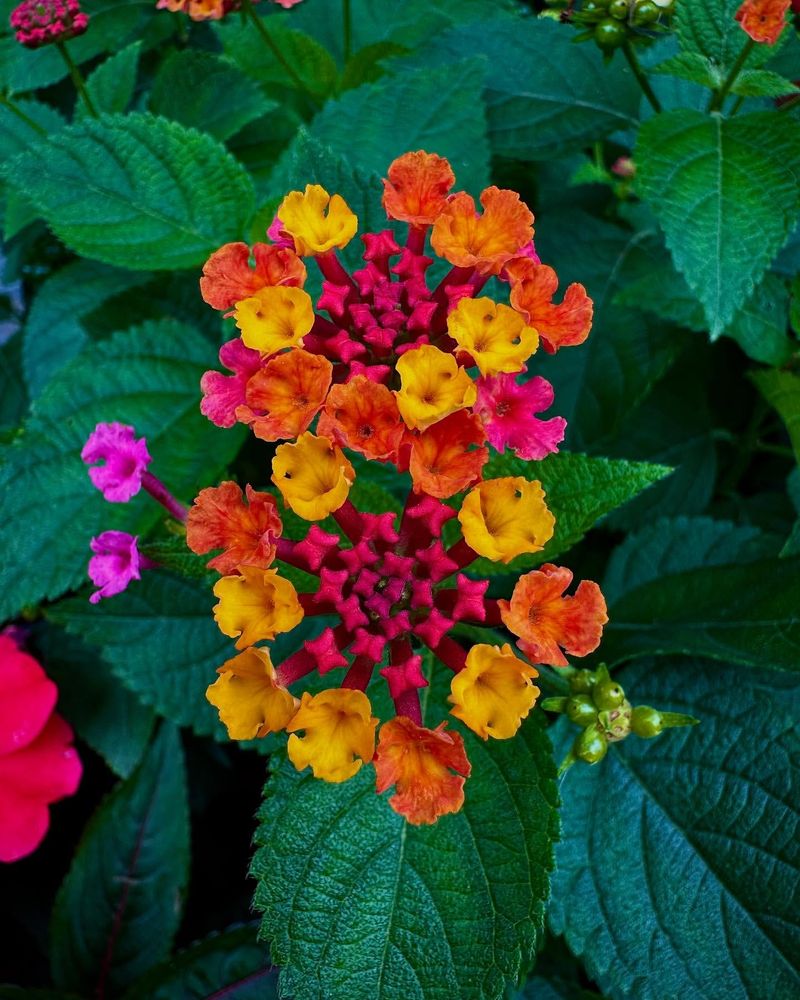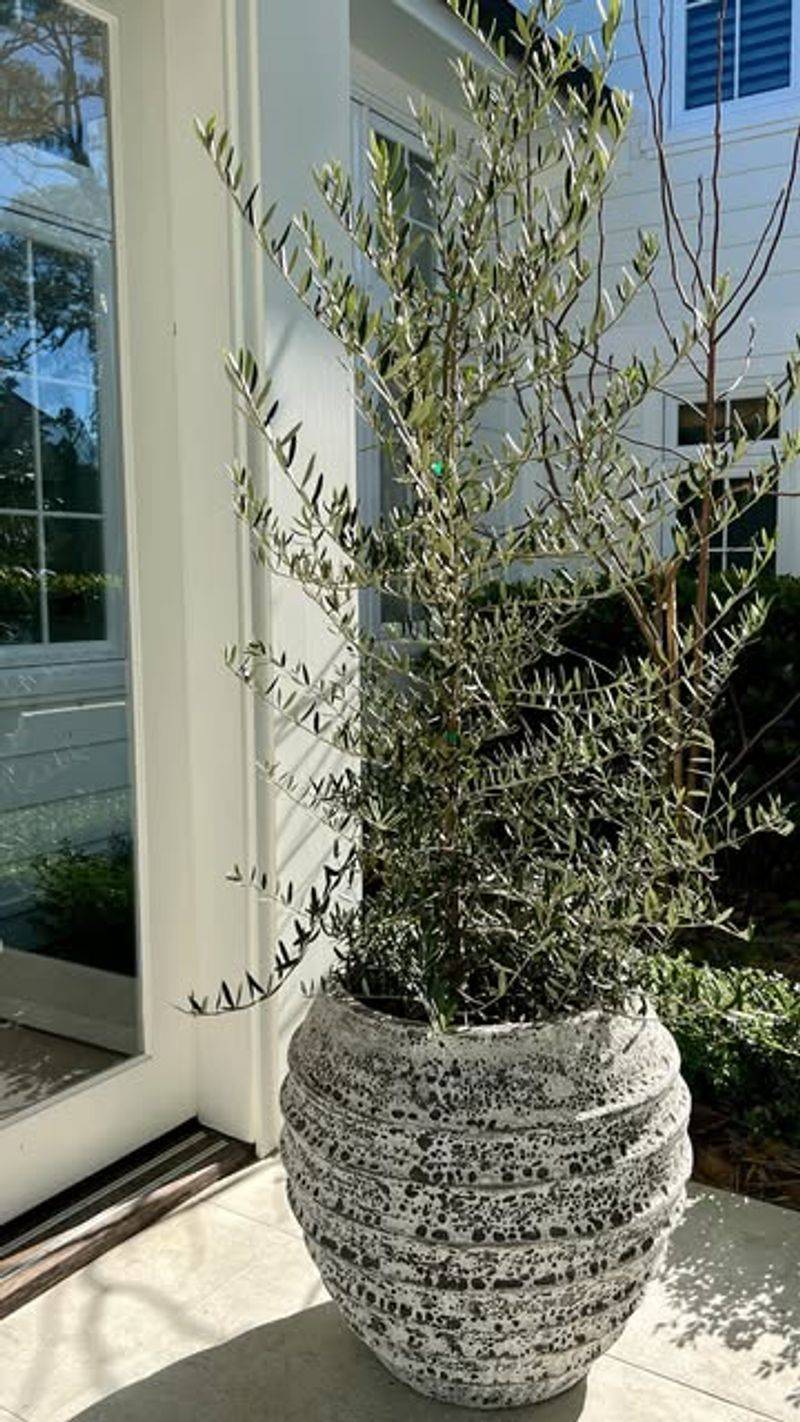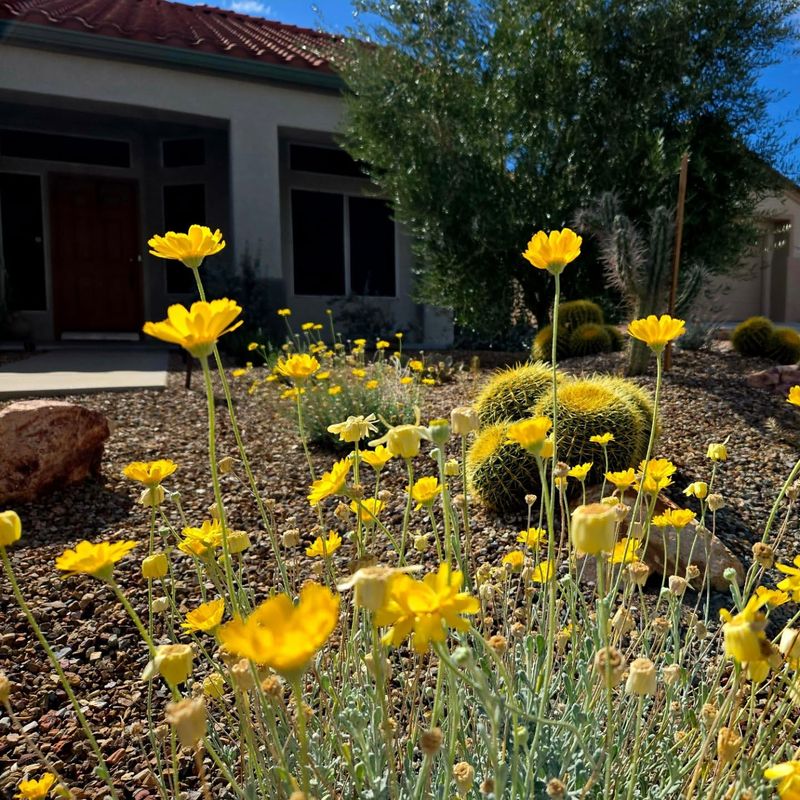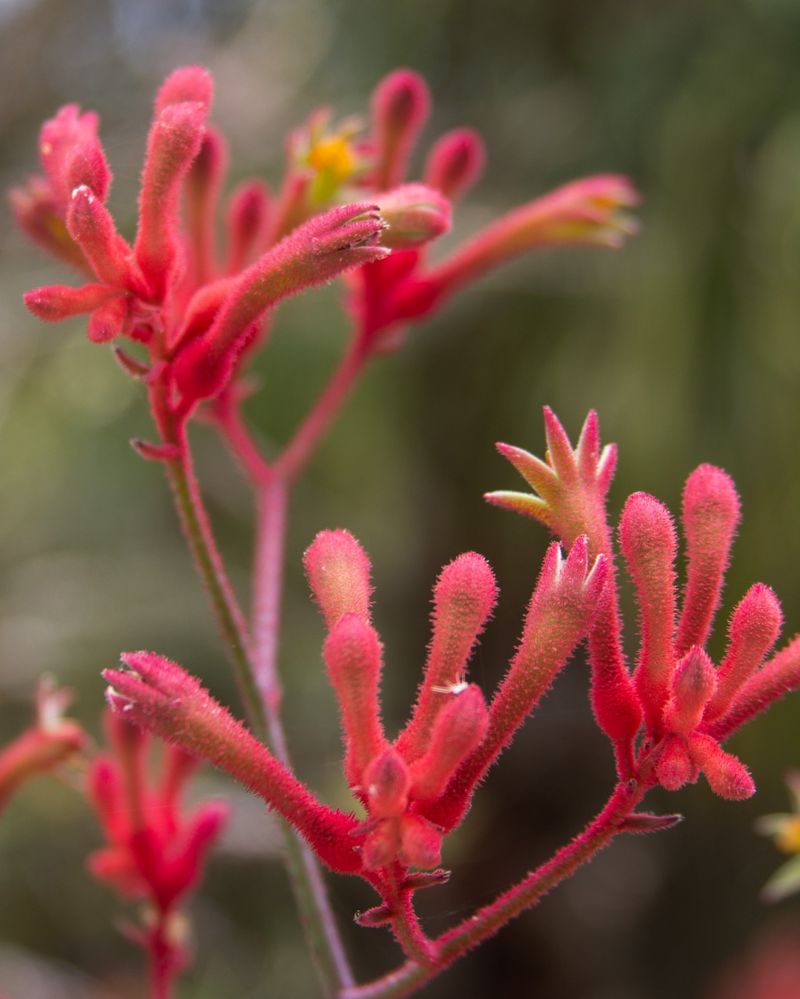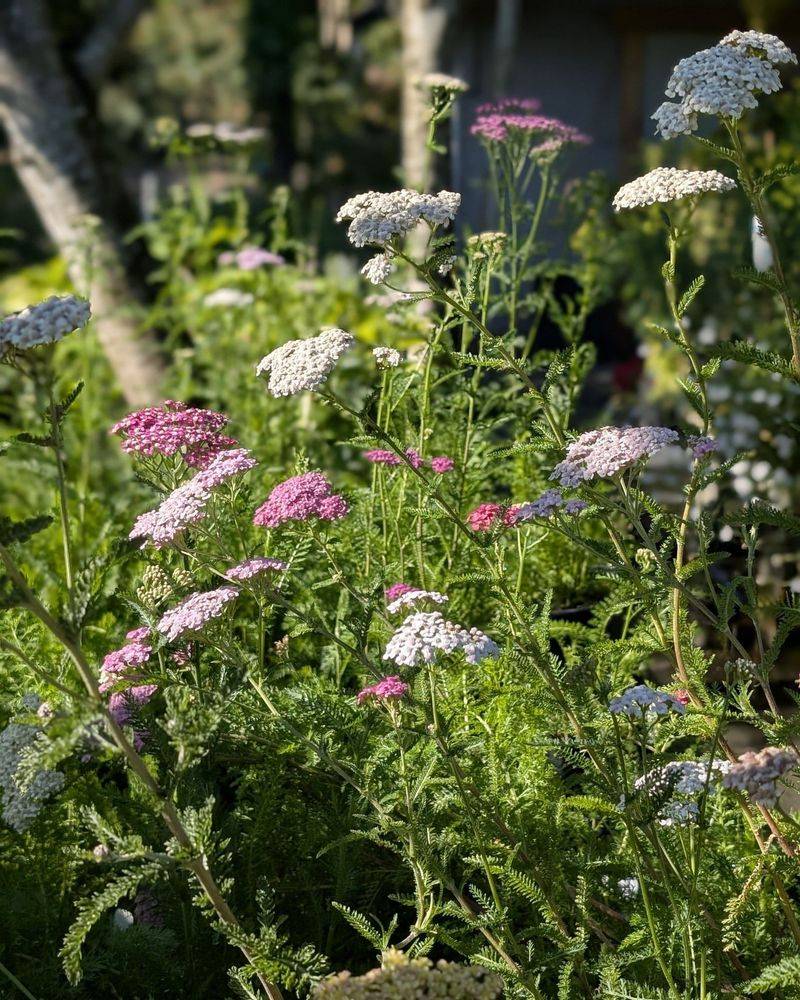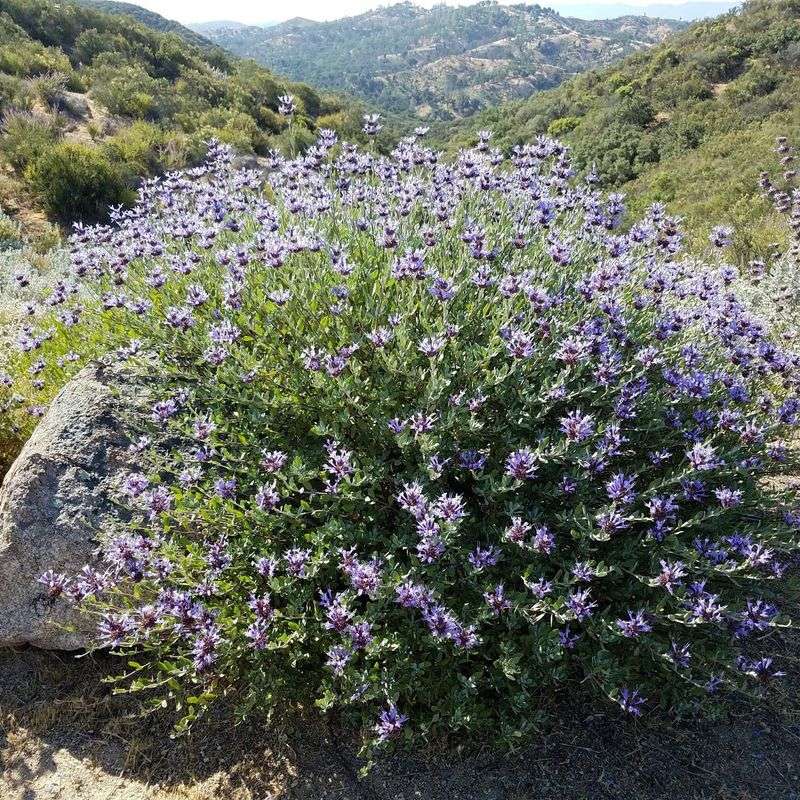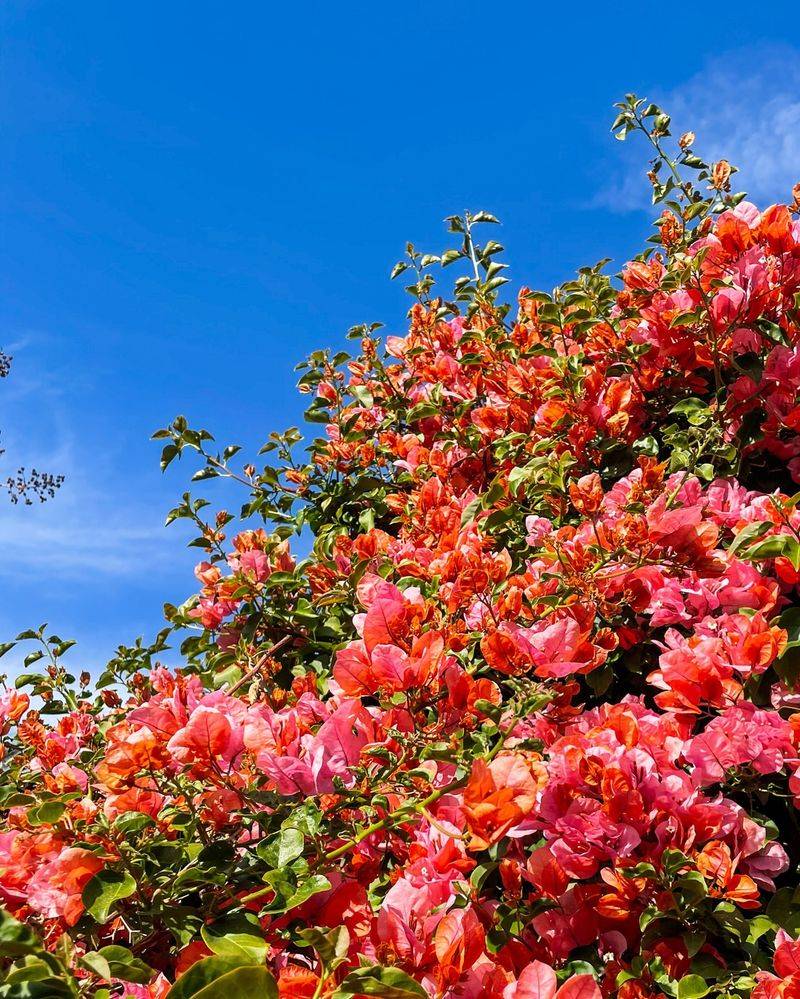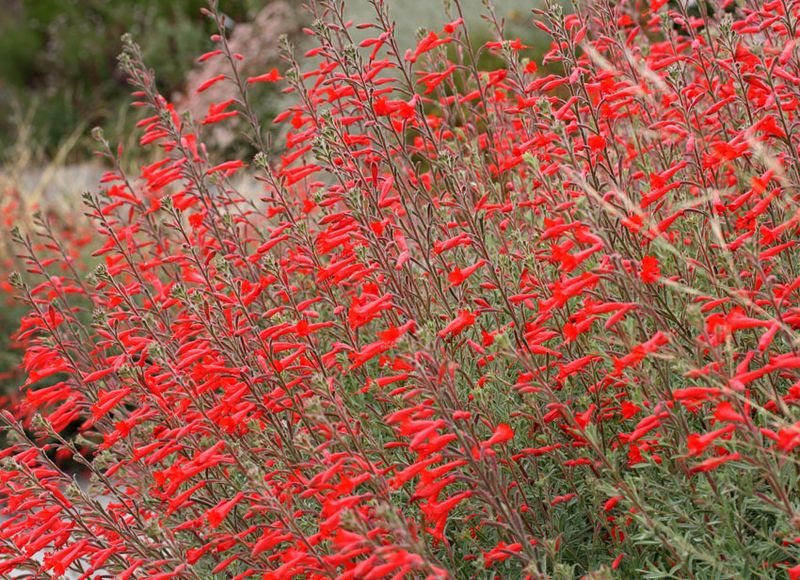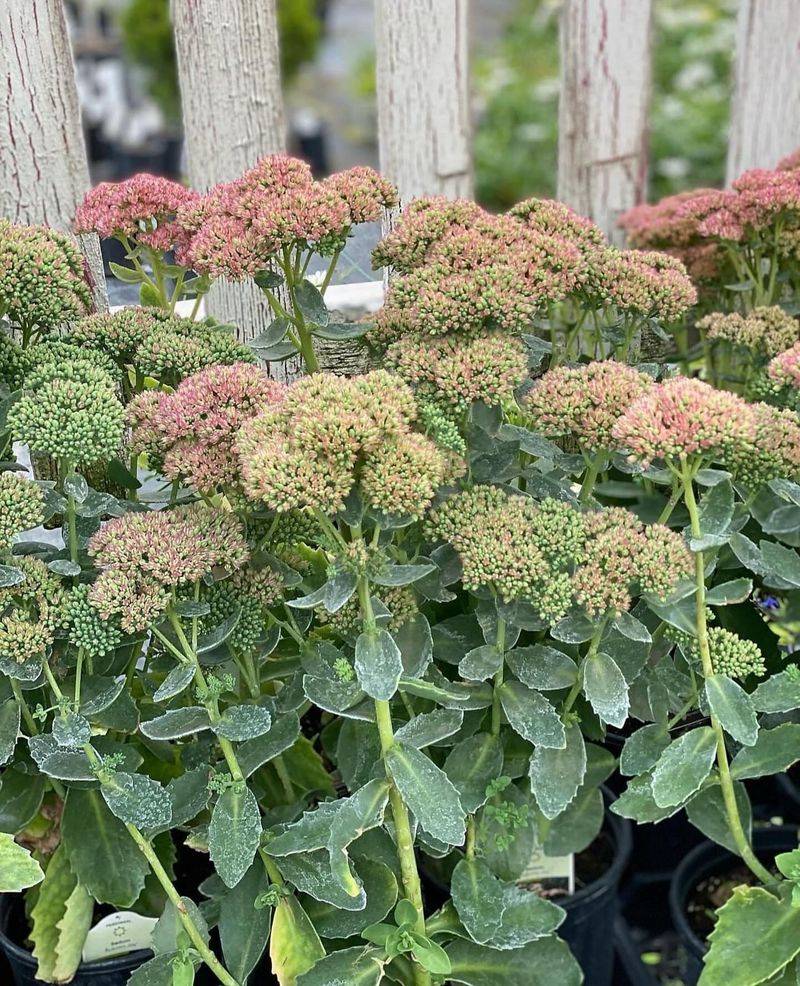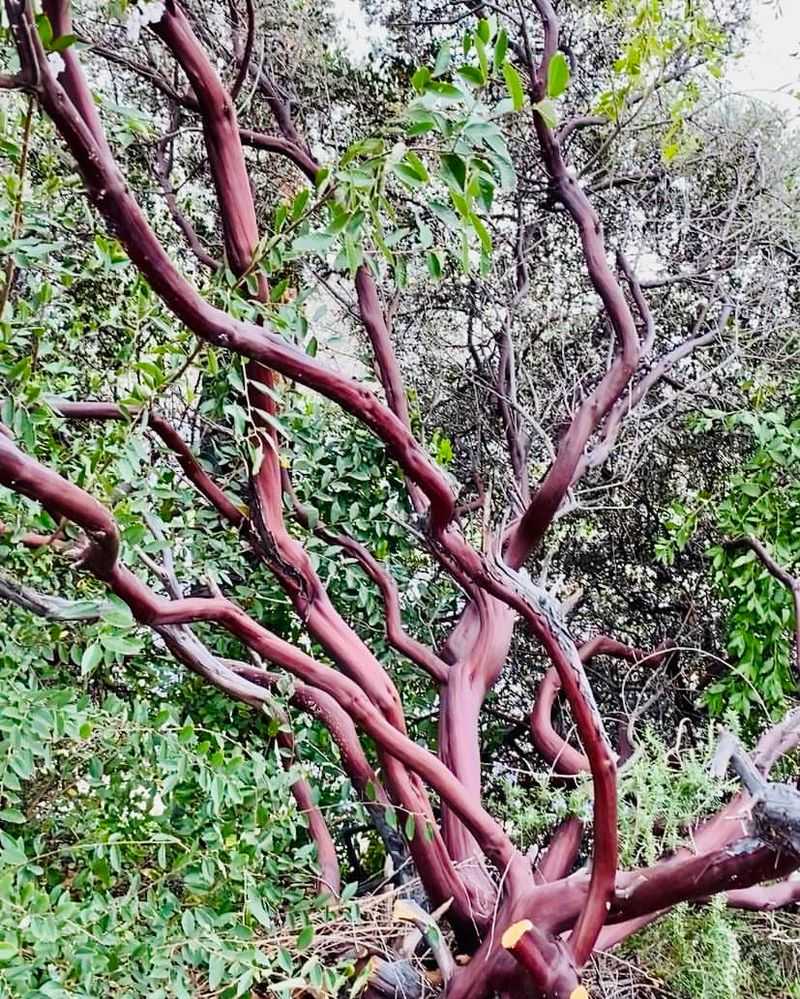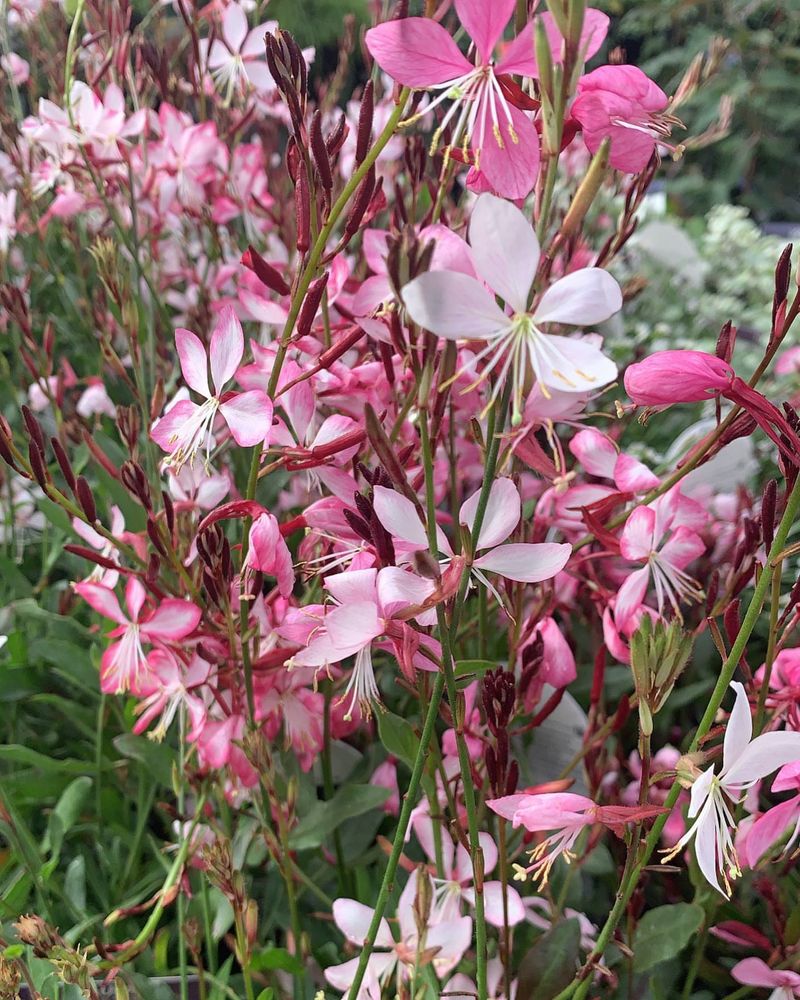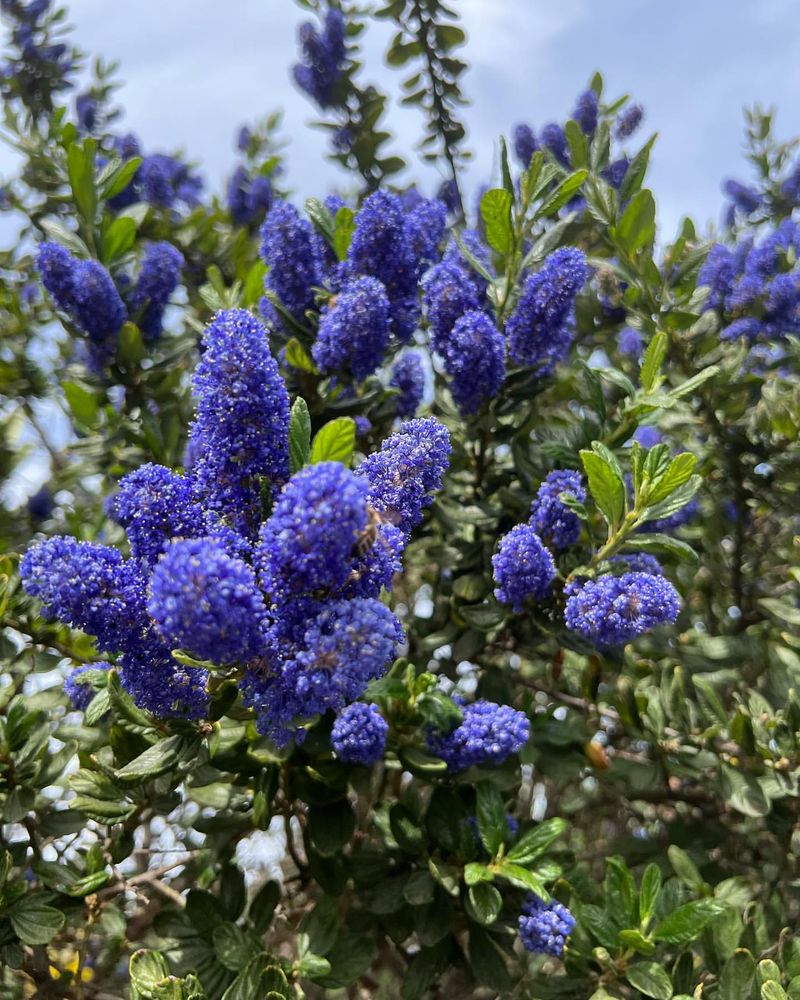Late summer gardening in California presents unique challenges with scorching temperatures and water restrictions. Smart plant choices can transform your dry landscape into a vibrant oasis without draining precious resources.
Whether you’re refreshing your garden beds or starting a new drought-smart landscape, these resilient plants will flourish despite California’s tough conditions.
1. Lavender
Fragrant purple spikes sway gently in the breeze, bringing both beauty and practicality to your garden. Lavender loves California’s dry conditions and actually performs better with minimal watering once established.
Plant it in well-draining soil with full sun exposure. The aromatic oils that make lavender so delightful actually increase during drought conditions, resulting in more intense fragrance and flavor. Harvest stems for drying or use fresh in cooking.
2. Mexican Sage
Hummingbirds can’t resist the velvety purple flower spikes of Mexican sage. This stunning perennial reaches about 3-4 feet tall and creates dramatic vertical interest in any garden space.
Unlike many flowering plants, Mexican sage performs its best show in late summer through fall when other plants have faded. The silver-green foliage remains attractive year-round and requires almost no supplemental water after the first season. Simply plant and enjoy the wildlife it attracts.
3. Agave
Bold architectural shapes make agave a showstopper in modern landscapes. These dramatic succulents store water in their thick, fleshy leaves, allowing them to thrive during extended dry periods.
Varieties range from small 1-foot specimens perfect for containers to massive 6-foot statement plants. Their blue-green or variegated foliage adds year-round interest with minimal maintenance required. Just remember to place them away from walkways – those spiky tips mean business!
4. Rosemary
More than just a kitchen herb, rosemary serves as a fantastic landscape plant in California gardens. Its needle-like leaves release a wonderful pine-like scent when brushed against, making garden walks more enjoyable.
Upright varieties can form informal hedges reaching 4-5 feet tall, while prostrate types cascade beautifully over walls or containers. Once established, rosemary practically thrives on neglect. The tiny blue flowers that appear periodically attract beneficial pollinators to your garden.
5. California Poppy
Golden orange blooms carpet hillsides across the state each spring, but California poppies can actually be planted in late summer too. The state flower naturally reseeds itself, creating stunning drifts of color year after year.
Simply scatter seeds in well-draining soil and let nature take its course. These native wildflowers have evolved to thrive in California’s climate cycles, going dormant during extreme heat or drought. Their feathery blue-green foliage adds delicate texture to garden beds even when not blooming.
6. Lantana
Butterflies flock to lantana’s multicolored flower clusters that seem to bloom endlessly from summer through fall. This sun-loving perennial creates a riot of color even during the hottest months when other plants struggle.
Available in spreading groundcover varieties or more upright forms, lantana fits beautifully in containers or borders. The tiny flowers often display multiple colors on a single cluster, creating a confetti-like effect. Once established, lantana requires minimal water and actually blooms more profusely when kept slightly dry.
7. Olive Tree
Silvery-gray foliage catches the light beautifully as gentle breezes move through an olive tree’s graceful branches. These Mediterranean natives are perfectly adapted to California’s climate, surviving for centuries with minimal care.
Fruitless varieties like ‘Swan Hill’ or ‘Wilsonii’ provide the classic Mediterranean look without messy fruits. Plant as a specimen tree or create a grove for dramatic effect. Their moderate growth rate and ability to thrive in poor soils make olives ideal for challenging garden spots.
8. Desert Marigold
Cheerful yellow daisy-like flowers dance above silvery foliage, bringing sunshine to the garden even during drought. Desert marigold is a true survivor, blooming repeatedly throughout the warm season with zero pampering.
Native to desert regions, this perennial wildflower has evolved remarkable drought tolerance. Seeds can be sown directly in late summer for fall blooms. Their compact size (about 1-2 feet tall) makes them perfect for borders or rock gardens. The fuzzy silver foliage remains attractive even when not in bloom.
9. Kangaroo Paw
Fuzzy, claw-shaped flowers in striking colors rise above strappy foliage, creating exotic vertical interest in the garden. Native to Australia’s harsh climate, kangaroo paws feel right at home in California’s similar conditions.
Available in red, yellow, orange, and pink varieties, these unusual perennials attract hummingbirds while requiring minimal water. Their architectural form makes them excellent companions to succulents and other drought-tolerant plants. Cut flower stalks last exceptionally well in arrangements, bringing their unique texture indoors.
10. Yarrow
Flat-topped flower clusters hover above feathery foliage, creating a delicate presence that belies yarrow’s ironclad toughness. This native perennial laughs at drought, poor soil, and neglect while continuing to bloom profusely.
Modern varieties come in a rainbow of colors from traditional white to vibrant reds and yellows. The fern-like foliage adds wonderful texture to the garden even when the plant isn’t flowering. Butterflies adore yarrow’s easy-access nectar, making it a wildlife-friendly addition to any landscape.
11. Cleveland Sage
Walking past a Cleveland sage in bloom is an unforgettable sensory experience. The intoxicating fragrance fills the air while whorls of lavender-blue flowers attract buzzing pollinators by the dozens.
This California native creates a stunning architectural presence, forming a rounded shrub about 3-5 feet tall and wide. Aromatic gray-green leaves remain attractive year-round. Cleveland sage requires excellent drainage and actually performs better without summer irrigation once established – perfect for California’s driest months.
12. Bougainvillea
Cascades of paper-like bracts in vibrant magenta, orange, or white transform walls, fences and trellises into spectacular living art. Bougainvillea thrives in California’s hottest, driest conditions, actually blooming more profusely with some drought stress.
Train it as a climbing vine or allow it to form a sprawling shrub. The colorful display isn’t actually flowers but modified leaves called bracts that surround the plant’s tiny true flowers. With minimal water and plenty of sun, bougainvillea rewards gardeners with months of tropical color.
13. California Fuchsia
Brilliant scarlet trumpet-shaped flowers seem to glow against silvery foliage, creating a stunning late-summer display when many plants have finished blooming. Hummingbirds battle for territory around these native perennials, drawn irresistibly to the nectar-rich blossoms.
Also known as Zauschneria, California fuchsia spreads slowly to form attractive groundcover in well-draining soil. Different varieties offer various heights from low-growing 6-inch types to more upright 2-foot forms. Their natural bloom time perfectly coincides with California’s driest months.
14. Sedum
Succulent rosettes in fascinating patterns create living tapestries that change with the seasons. From ground-hugging varieties to more upright forms, sedums offer incredible diversity for drought-tolerant gardens.
Fall-blooming types like ‘Autumn Joy’ develop flower heads that transform from pale green to deep rose as summer transitions to autumn. Their fleshy leaves store water, allowing them to sail through dry periods with ease. Sedums work beautifully in containers, rock gardens, or as groundcover in areas that receive little attention.
15. Manzanita
Smooth mahogany-colored branches twist and turn dramatically against evergreen foliage, creating year-round interest even when not in bloom. Native manzanitas range from groundcovers to small trees, offering options for every garden space.
Delicate bell-shaped flowers appear in late winter, providing crucial nectar for early pollinators. The name means “little apple” in Spanish, referring to the small red berries that follow the flowers. Manzanitas demand excellent drainage and perform best with no summer water after establishment.
16. Gaura
Dancing butterfly-like blossoms hover on wiry stems, creating a sense of movement and lightness in the garden. Also called wandflower, gaura brings airy texture to garden borders while requiring minimal water to thrive.
The white or pink flowers open progressively up the stem, creating a long bloom period from summer through fall. Reaching about 2-3 feet tall, gaura moves gracefully in the slightest breeze. Its drought tolerance improves with age, making it increasingly valuable in water-wise California gardens.
17. Ceanothus
Masses of tiny blue flowers cover this California native shrub in spring, creating a breathtaking display that earns its nickname “California lilac.” The evergreen foliage provides structure and screening year-round.
Varieties range from groundcovers to substantial 8-foot shrubs, all sharing exceptional drought tolerance once established. Ceanothus absolutely requires good drainage and performs best with no summer irrigation after the first year. Their deep root systems help stabilize slopes while supporting native wildlife.

